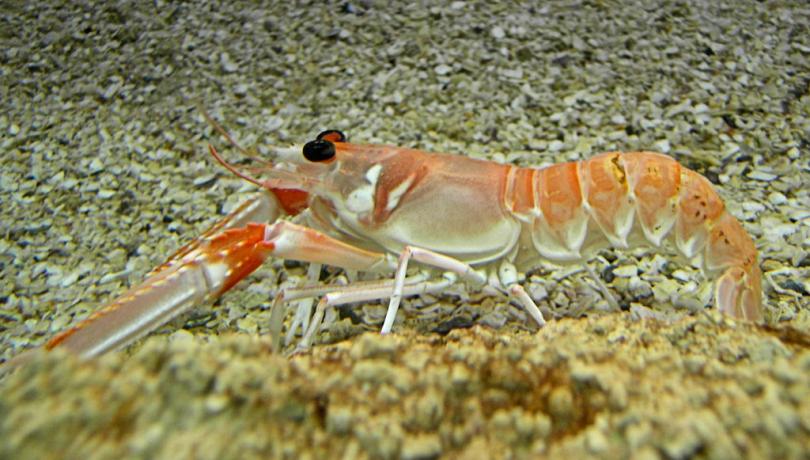This is the main conclusion of a new study led by the ICM-CSIC that proves the recovery of the Norway lobster (Nephrops norvegicus) in a small reserve comprising the fishing grounds of Roses and Palamós (Girona).

A new study led by the Institut de Ciències del Mar (ICM-CSIC) has proven the effectiveness of a small marine reserve comprising the fishing grounds Roses and Palamós (Girona) by increasing significantly and in a much shorter time than expected the population of Norway lobster (Nephrops norvegicus), caught intensively for many years in the area.
According to the work, the good recovery of the species is due to the prohibition of trawling in this point of the Catalan coast since 2017, a measure that became effective thanks to the establishment of a marine reserve of 10 km2. This has also allowed the recovery of the seabed morphology -plowed by trawl fisheries- and the fauna associated with it.
To carry out the study, recently published in the journal Science of the Total Environment, researchers analyzed, through the use of remotely operated robots (better known as ROVs), the populations of this emblematic species of the Mediterranean inside and outside the reserve, between 351 and 475 meters deep.
"This allowed us to see that the Norway lobster population inside the reserve was double that of the control area, where fishing continues to this day. We also saw that the bottom habitats had recovered significantly inside the protected area, while outside the reserve there were trawl marks in at least 69% of the transects carried out," states Maria Vigo, lead author of the study.
Joan Navarro and Joan Baptista Company, principal investigators of the RESNEP project where this work is framed, emphasize the acceptance of the fishermen of the Roses and Palamós fishermen's associations when it comes to prohibiting fishing activity in this small reserve.
"This opens the possibility of extending this same action to other areas where this species and the marine ecosystem where it is present are also overexploited. In the end, the goal is to recover what is considered one of the most valuable crustaceans in European fisheries," add the researchers.
The role of underwater robotics
Usually, for the study of species living in deep-sea habitats, experimental trawling is carried out, which contributes to the "plowing" of the seabed. "Underwater robots, on the other hand, allow a much more exhaustive and non-invasive monitoring of these species," says Jacopo Aguzzi, co-author of the paper and expert in the use of marine technology applied to the study of communities of species associated with the bottom.
In this case, the images and videos recorded by the robots showed a considerable increase in the density and biomass of Norway lobsters inside the reserve compared to adjacent areas. They also showed how some species that share habitat with the Norway lobster, such as the redfish (Helicolenus dactylopterus) and the garneo (Trigla lyra), which had also declined due to trawling despite not being the target of this activity, have benefited from the establishment of the reserve, considerably increasing the biomass of their populations.